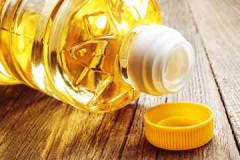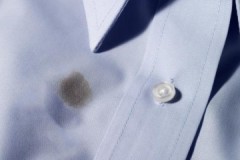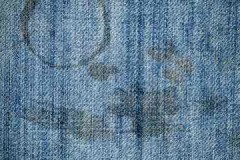Is it possible and how to remove an engine oil stain at home?
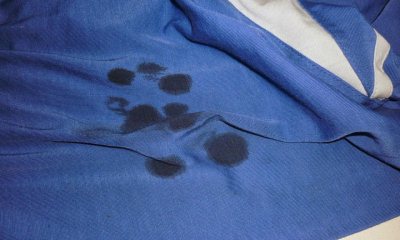 Industrial oils are one of the most difficult contaminants that are difficult to remove from almost any surface. The consistency and composition of the lube make it difficult to remove these stains.
Industrial oils are one of the most difficult contaminants that are difficult to remove from almost any surface. The consistency and composition of the lube make it difficult to remove these stains.
In some cases, improvised and special means will help to cope with the situation. Moreover, it is possible to clean even such a complex surface as concrete.
How to remove an engine oil stain from clothes, asphalt, concrete, paving slabs, we will tell in the article.
Content
Where to begin?
Clothes are most commonly affected by oil stains. An accidental marking can lead to another good piece of clothing being thrown away. To prevent this from happening, it is advisable to take up the removal of a trace from technical fluids as soon as possible.
 It is important to adhere to two main recommendations:
It is important to adhere to two main recommendations:
- To localize the place where the engine oil hits the surface, preventing it from spreading over a larger area.
- Prevent the absorption of oil into the material. To do this, use drugs that are able to absorb the spilled product.
It is recommended to sprinkle the fresh stain on top as soon as possible:
- salt,
- talcum powder,
- chalk,
- starch or other powder that slows down the absorption of oil into the surface.
After the fat has been absorbed, the powder is collected, and they begin to remove the trace from the spilled engine oil.
How to remove it using folk methods?
You can try to remove the traces left by machine oil with the help of available tools.
Laundry soap
Soap is the most gentle way to remove stains, but a good result is only possible if the stain is fresh. Procedure:
- rub the affected area with soap;
- postpone the item for 3 hours;
- rub the treated area intensively with a brush using hot water;
- wash in the usual way.
Reprocessing may be necessary.
Dishwashing gel
The gel, which contains fat-soluble components, can help with removing stains, but only if a little time has passed.
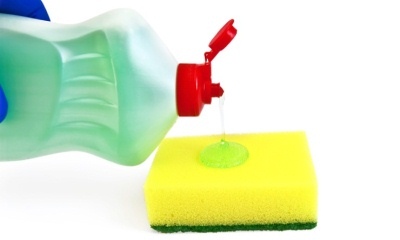 Application procedure:
Application procedure:
- Apply liberally so that the gel covers the entire stained area and saturates the fabric.
- Leave on for at least 2-3 hours.
- Rub with a brush.
- Rinse.
- Wash the product.
Toothpaste
Toothpaste can be used for fresh stains. The product is generously applied to the area, tinder, and after a couple of hours washed in warm water.
Toothpaste won't deal with old oil marks, but may discolor the material at the application site if applied for a long enough time.
Ammonia
Ammonia is often used as a solvent. Before use, the drug must be diluted with warm water in a 1: 1 ratio. The material is actively moistened with a solution and left to act for 15-30 minutes. Then they wash it off.
Ironing
You can try to eliminate the oil by warming up the affected tissue. For these purposes, you will need paper napkins with high absorbency.
Procedure:
- arrange napkins on both sides of the place of pollution;
- iron the fabric through several napkins;
- continue the process, replacing the soiled napkins with clean ones as necessary.
Heating a fabric with an engine oil stain may produce a specific unpleasant odor.
Petrol
Refined gasoline can be used as a solvent. Baking soda and liquid soap are also useful for removing the stain.
Procedure:
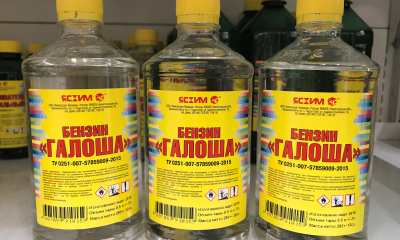 Combine liquid soap and gasoline in equal proportions.
Combine liquid soap and gasoline in equal proportions.- Stir.
- Apply the composition to the stain.
- Leave to act for 1-1.5 hours.
- Wash off.
- Pour baking soda on the contaminated area.
- Leave for 10-15 minutes.
- Wash off.
- Wash.
Instead of gasoline, kerosene or acetone can be used.
How to remove with special preparations?
Even the tricky marks that engine oil leaves on clothes can be removed. For these purposes, stain removers are used that are active against greasy traces of technical fluids.
Dr. Beckmann
The stain remover made in Germany is available in liquid form in small packages. The product is suitable for removing marks left on the fabric:
- machine lubrication,
- oil,
- bitumen.
You can use the drug for processing things of adults and children.
For the composition to work, the stain is well wetted, covered, and the product is allowed to lie down. In this case, the surface of the fabric should not dry out. As a result of the treatment, the engine oil dissolves and can be removed with tampons and napkins. A piece of material is wiped with a rag. After the oil has been removed, the textiles are washed.
The product is not suitable for processing carpets and leather items... The average price is from 200 rubles per bottle.
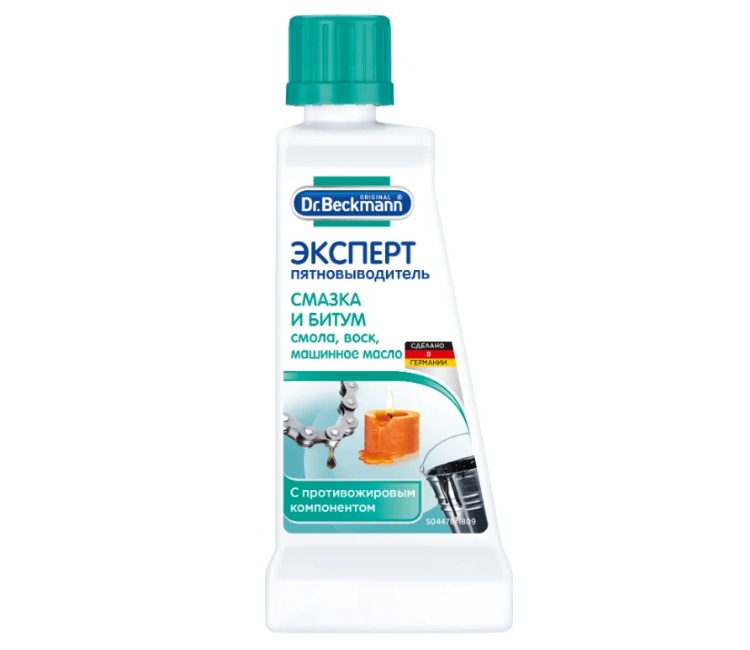
Astonish Oxy Active Plus
The drug produced in the UK is produced in a concentrated form. The product contains no phosphates. The powder can be used to wash clothes for children and adults from various types of fabrics.
Astonish powder can be used to remove stubborn and stubborn stains. In addition to clothing, the stain remover helps to clean:
- furniture upholstery,
- floor and wall tiles,
- carpets and other surfaces.
The product comes with a measuring spoon, which makes dosing easier. Price - from 150 rubles per 0.5 kg package.
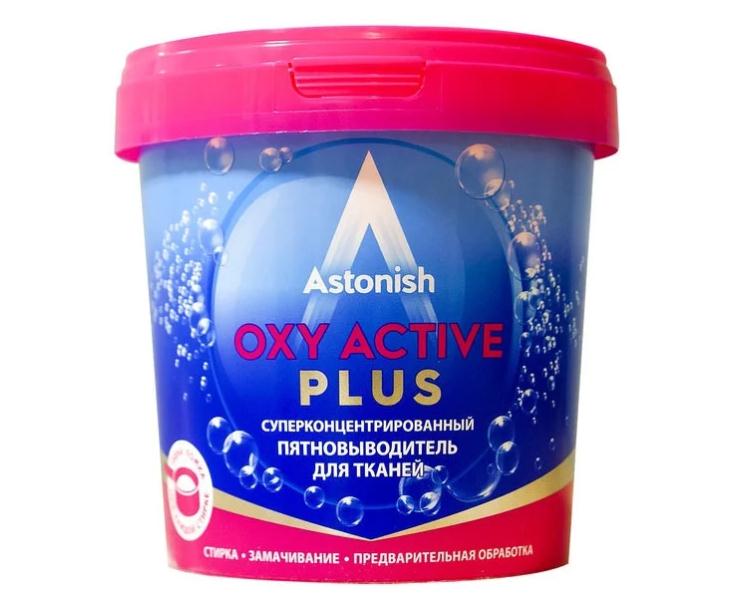
Liqui Moly Auto-Innenraum-Reinger
Automotive cosmetics - car interior cleaners - do well with machine oil on fabrics and other surfaces. The drug TM Liqui Moly is available in liquid form in spray bottles. It removes traces of machine oil well, refreshes the material.
To remove stains from fabric the product is sprayed onto the problem area, if necessary, this action is repeated... During the cleaning process, do not allow the liquid to dry on the material.Price - from 800 rubles.
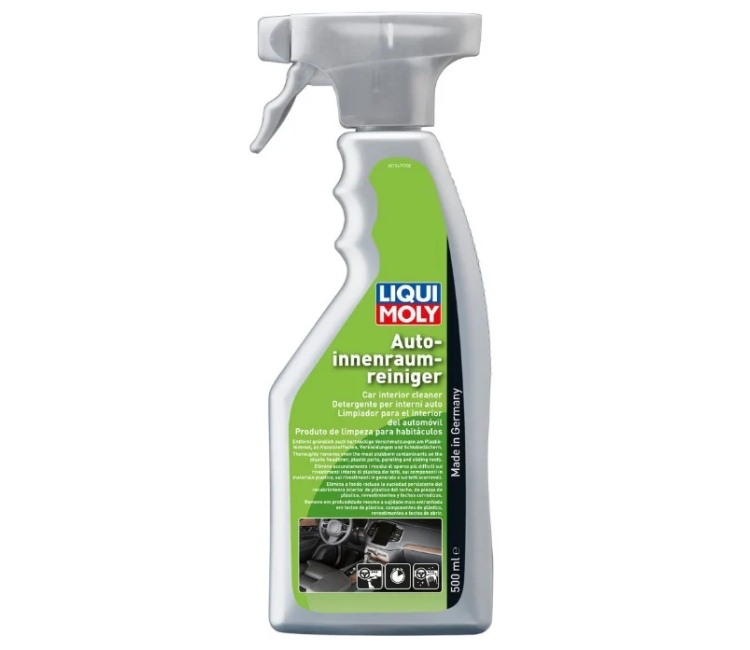
How do I clean different types of fabrics?
When starting to remove an oil stain, you need to consider the type of clothing and the type of material. Both improvised and special means can be used.
Cotton, linen
Simple folk recipes can be used to remove oil from natural fabrics. Even dishwashing gel gives good resultsif used while the stain is fresh.
Jeans
Denim material has a high density of weave fibers. Oil on jeans is quickly absorbed and difficult to remove. For processing such fabric, it is better to use not soap or dish gel, but more aggressive solutions. For example, based on acetone or gasoline. It is recommended to process the material with solutions from the wrong side.
Suede leather
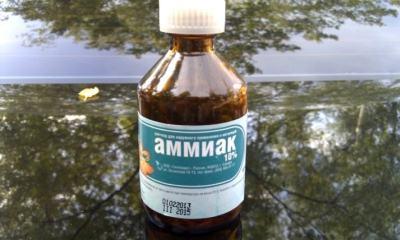 You will have to remove oil from suede in several stages, acting gradually.
You will have to remove oil from suede in several stages, acting gradually.
It is possible to use any of the methods that does not stain or discolor the material, and also does not spoil the texture of the suede. It can be ammonia or gasoline..
The use of thinner should be limited, not smearing the stain on the surface of the material. At the end of the process, it is better to wash off the remains of the funds that were used to remove the oil with soapy water, and treat the suede with a special agent.
Outerwear
To remove oil from jackets and other items gasoline, laundry soap, dishwashing gel can be used and other improvised means.
Treatment should begin by removing excess oil and preventing grease from spreading to the interior and lining. In difficult cases, you will have to rip up the lining in order to have access to the problem area from both sides.
Leather
Any stains from natural leather should be removed as carefully as possible, avoiding intense exposure. To remove the stain soap, gasoline, dishwashing gel can be used... After finishing the treatment, the skin must be treated with a special agent.
How to remove an engine oil stain from clothes, the video will tell you:
Features of removing from paving slabs, concrete, paving stones and asphalt
Removing technical liquids from concrete, tiles and asphalt allows not only maintaining the aesthetics of the area around the house and the garage.
Oil remaining on the coating:
- reduces its strength;
- worsens the level of fire safety of the garage;
- violates the environmental friendliness of the space.
Machine oil spilled on asphalt, tiles or concrete is very difficult to clean up. This is due to the fact that high molecular weight resins in the used oil easily penetrate into porous surfaces.
Methods for dealing with oil drips can be divided into the following groups:
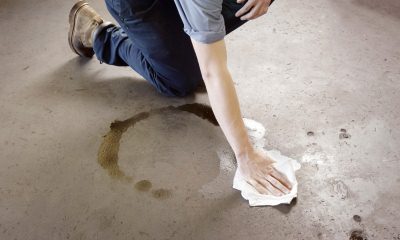 Mechanical cleaning... It uses brushes, scrapers, grinders and other devices.
Mechanical cleaning... It uses brushes, scrapers, grinders and other devices.- Dry and wet cleaning... In this case, the stain is covered with sand, sawdust or soda. After sweeping, most of the oil is removed. The cleaning is completed by a water pressure wash.
- Chemical treatment... For her, solvents are used.
In most cases, to achieve optimal results, it is necessary to use an integrated approach that combines several methods of exposure.
How to remove an engine oil stain from paving slabs and concrete, the video will tell you:
What shouldn't be done?
In the process of removing machine oil it is important to avoid these common mistakes:
- Start removing stains over time.If a lot of time has passed since the moment the oil got on the porous surface with good absorbency, and the composition has been absorbed and fixed, it will be extremely difficult and not quick to completely remove it.
- Technical oil is a difficult to remove substance. To cope with it, chemical manufacturers offer agents that are aggressive in their effect. In this case, there is a possibility of damage to the material. To prevent this from happening, any solvent must first be tested on an inconspicuous area.
- Intense friction of the fabric, especially without the use of solvents. With this effect, the stain can occupy an even larger area and penetrate deeper into the material.
Recommendations
For more efficient work it is recommended to adhere to the following tips:
 Gentle lube removers may have little or no effect on old stains.
Gentle lube removers may have little or no effect on old stains.- Before using the solvent, you must study the instructions for it.
- Stubborn stains may need to be treated several times. And even in this case, the result may not be the best.
- Machine oil solvents, for the most part, have an aggressive composition. In order not to spoil the thing, it is recommended to test it on an inconspicuous area before using the product for the first time.
- Even after removing the stain, a specific technical aroma may still be present on the clothes. To completely eliminate it, the thing must be well ventilated.
- Dilapidated fabrics may not withstand intensive cleaning. If the item has a significant degree of wear and tear, you just have to throw it away.
If you are interested in how to remove vegetable and machine oil stains from various surfaces, take a look at this section.
Conclusion
Engine oil stains can be removed by getting down to business right away and avoiding common mistakes. But in some cases, it may not be possible to save the thing, since technical liquids, due to their composition and consistency, are very difficult to remove, even by professional means.

